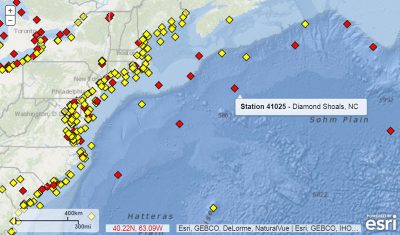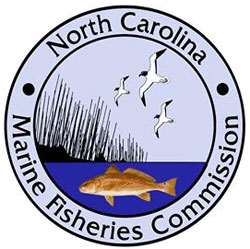Reprinted from Island Free Press
A weather buoy that was originally stationed about 17 miles off of Cape Point has made a long voyage up the Eastern Seaboard, and was last located about 671 miles away, well off the coast of New York City.
Supporter Spotlight

The buoy, formally known as Station 41025 – Diamond Shoals, is one of several buoys in the Outer Banks region that is managed by National Oceanic and Atmospheric Administration’s National Data Buoy Center, which provides valuable data for researchers and meteorologists.
“We use these buoys to collect observational information, which we then use for our forecasts,” said Morgan Simms of the National Weather Service office in Newport. “The big data we get out there especially is wave (activity), so we can use that as an estimate for wave height and swell height in that part of Atlantic.”
“(That buoy) provides water temperatures in the Gulf Stream as well, so we can get a rough idea of water temps in that area,” he added. “It’s one of multiple buoys on the North Carolina coast that we use for data.”
However, on Dec. 21, the National Data Buoy Center noted that the 3-meter foam buoy went adrift, and while the buoy has stopped transmitting some data, such as wave height and water temperature, it is still reporting it’s locale – and it has gone on quite the journey.
Seemingly following the Gulf Stream current in a northeast direction, the Station 41025 buoy covered more than 150 nautical miles during the past weekend alone, and is currently situated 40.22 degrees north latitude and 63.09 degrees west longitude, or roughly 671 nautical miles away from its original location in the Diamond Shoals.
Supporter Spotlight
Retrievals of runaway buoys are orchestrated by the National Data Buoy Center, which was temporarily closed during the government shutdown, and there is no word yet on when Station 41025 – Diamond Shoals might be returned back home.
Station 41025 has been providing data on the Outer Banks waters since 2003, and more information about the Diamond Shoals buoy can be found on the NOAA website.
This story is provided courtesy of the Island Free Press, a digital newspaper covering Hatteras and Ocracoke islands. Coastal Review Online is partnering with the Free Press to provide readers with more environmental and lifestyle stories of interest along our coast.







